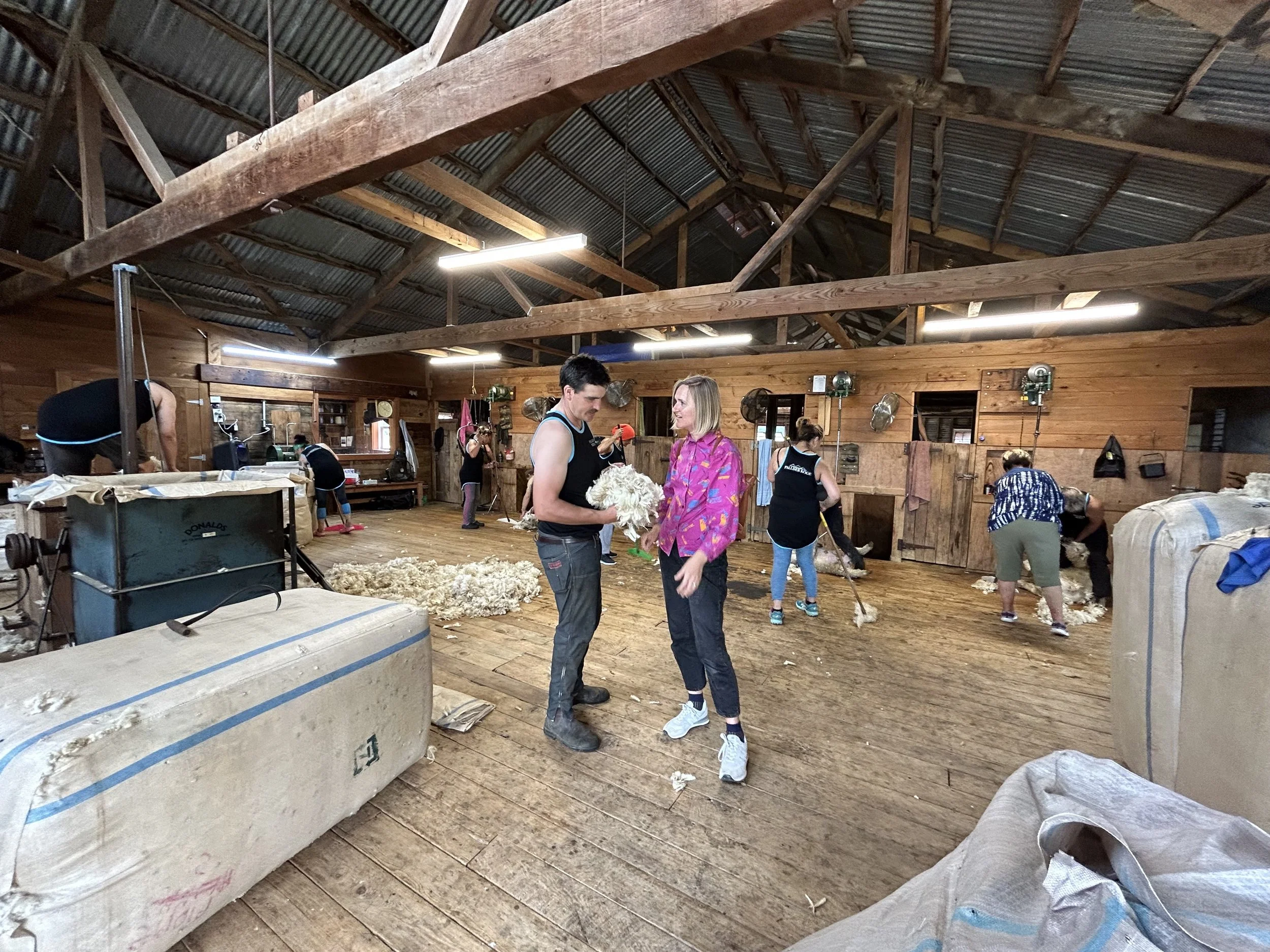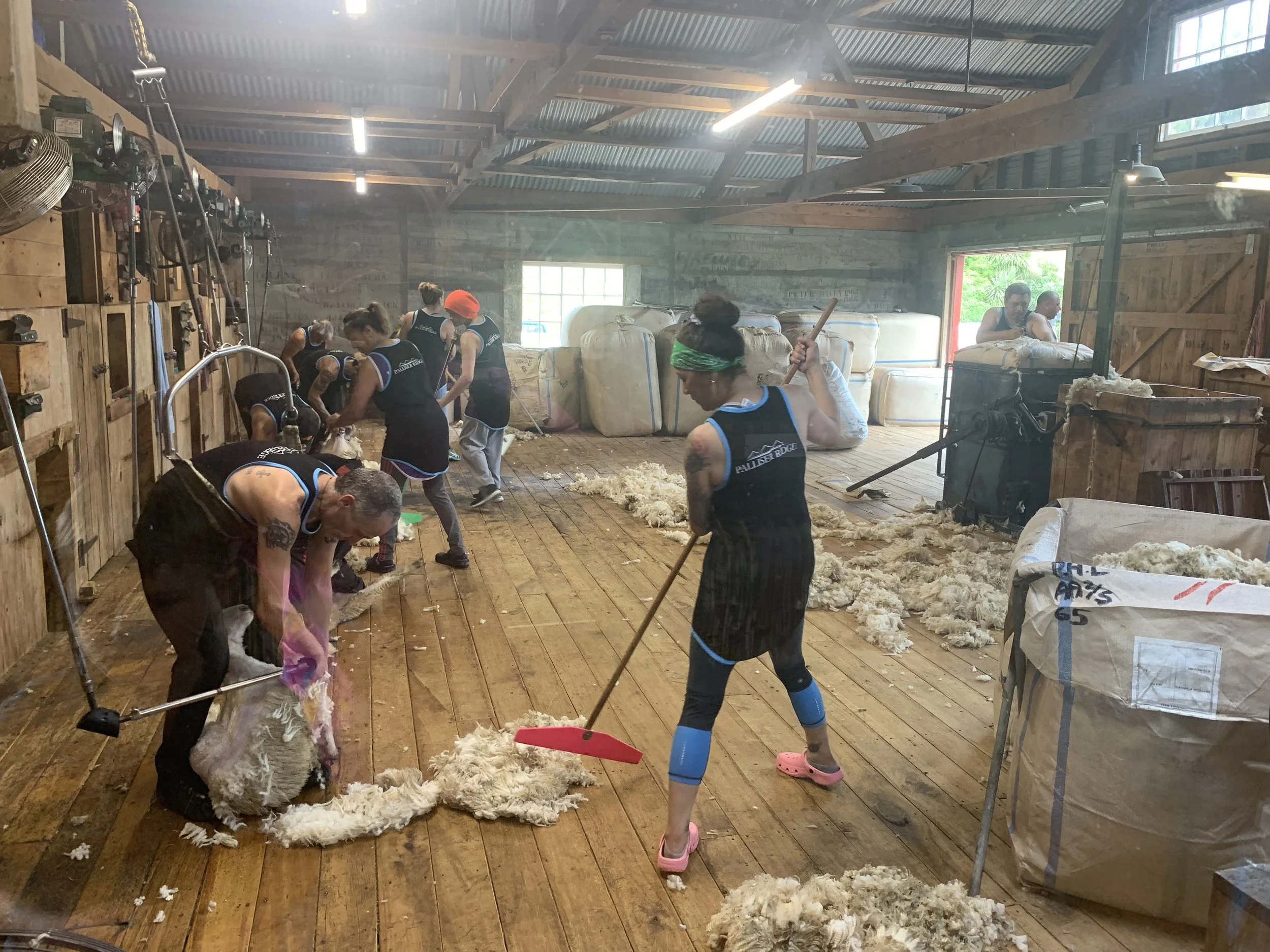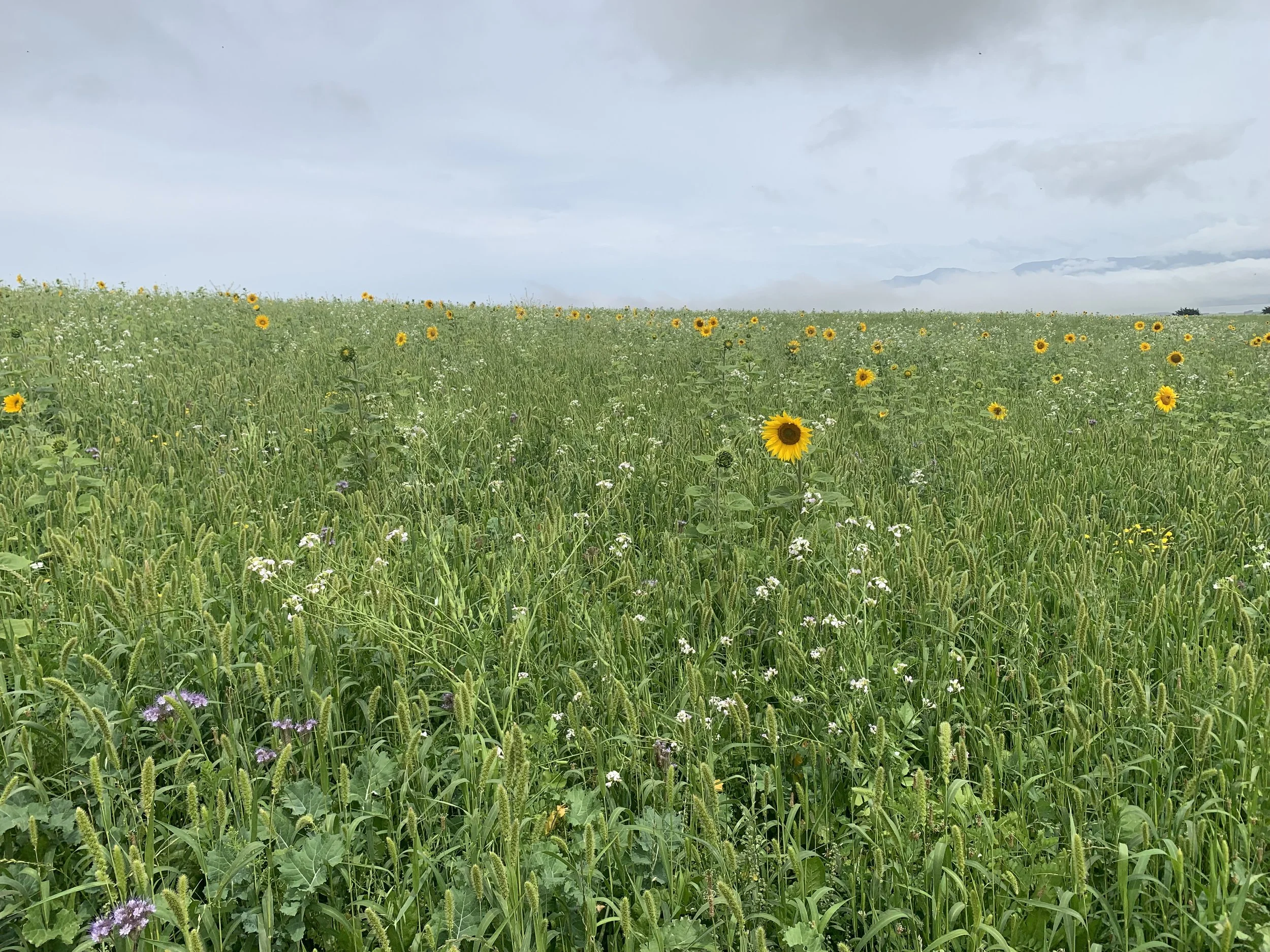Witnessing the February Shear at Palliser Ridge.
In the midst of New Zealand's recent weather extremes, I embarked on a journey to the southern tip of the North Island this February. My destination: Palliser Ridge, where they conduct their biannual shearing. This particular event marks the exclusive shearing of 29.5-micron lambswool from their Romney crossbred sheep—an essential component of my initial venture into the world of wool. For me, it is a fundamental part of the design process to meet everyone that works along the value chain, especially at a farm level. I want to take away the anonymity that accompanies so many wool brokering transactions and make it personal again between farmer and designer.
Words and photography : Sophie Poelman
Arriving in the Wairarapa
Navigating the challenging Rimutaka ranges in my trusty Toyota Corolla rental, I finally arrived in Martinborough in the heart of the Wairarapa. The initial evening brought a dinner with Kurt and Lisa Portas, where we delved into all things wool—a subject that always ignites engaging conversations. While Lisa and I had connected numerous times over the past year, this meeting marked my first encounter with Kurt, the farm manager and co-owner at Palliser Ridge. Our discussions spanned my ongoing project, recent advancements, and promising future opportunities. After a restful night in a charming mudbrick Airbnb, the following day beckoned the 20-minute journey to Pirinoa, the quaint township housing Palliser Ridge along the lower south coast of the North Island. A quick caffeine fix at the Landgirl cafe cafe in Pirinoa—housed in an old blacksmith’s workshop and highly recommended for its unique rural charm—preceded our journey to the farm.
High-energy dance party vibes in the shearing shed.
My first shearing experience
Stepping into the shearing shed, my initial surprise was the unexpected atmosphere—more of a a club-vibe than what I had imagined. Will Smith's "Getting Jiggy with It" blared through the space, contributing to a lively, almost party-like ambiance. Kurt, with dual roles as the the kaitiaki (caretaker) of the wool and the CEO of the shearing shed, is without a doubt a great leader on the farm. He ensured seamless operations, made sure everyone was happy, and ensuring every hardworking individual left with a Palliser Ridge singlet as a token of their efforts.
The shearers and the rousies
The shearing crew seemed like a focused and professional team getting the job done and having a bit of fun while doing it. It was a pleasure to personally meet and engage with this hardworking gang. The team comprised all men, with the fastest shearer (known as the ringer) stationed on the left, and learners, including a 10-year-old boy navigating the ropes, on the right. The rousies, a group of robust women, efficiently swept up the fleece after the shearers completed their task. The presser, a stalwart figure, played a crucial role in tightly compacting the wool into bales for transportation. Shearing is undeniably strenuous, demanding complete physical engagement for extended periods, akin to an intense gym workout class (accompanied by music reminiscent of a Les Mills pump class). Yet, amidst the challenging work, there were moments of respite—tea breaks, homemade treats, and an atmosphere of camaraderie in the shearing shed kitchen.
The stunning fields of sunflowers and plants at Palliser Ridge.
A critical part of the design process.
As my visit drew to a close, we embarked on a tiki tour of the farm, venturing into the regenerating forest where thousands of trees had been planted in a valley less suited for farming. We explored large fields of flowers, cultivated to attract bees and restore diversity to the soil. This serene interlude was a welcome contrast to the hustle and bustle of the woolshed. With the day's activities done, I hopped back into my compact rental car, navigating a 1.5-hour drive back to Wellington.
It is critical for me as a designer and founder to see the complete process from farm to fibre in person and build my relationship with the growers. It felt good to share with the shearers and the rousies the significance of their work and that 29.5 microns of fluffy white lambswool will soon be turned into beautiful functional textile products. Departing Pirinoa, I felt a sense of progress toward our goal of developing entirely traceable, transparent, single-origin, farm-to-product textiles. Collaborating with growers, we're on the path to co-creating a new future for New Zealand wool.








